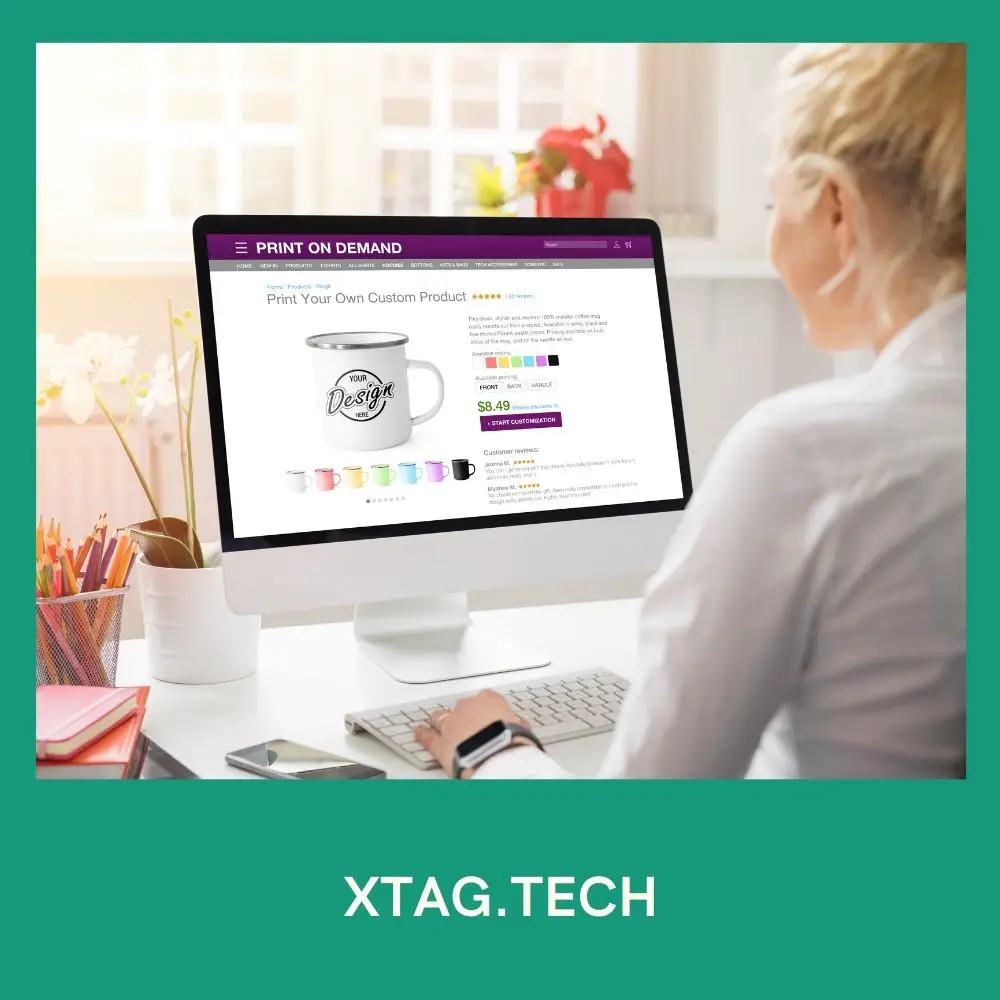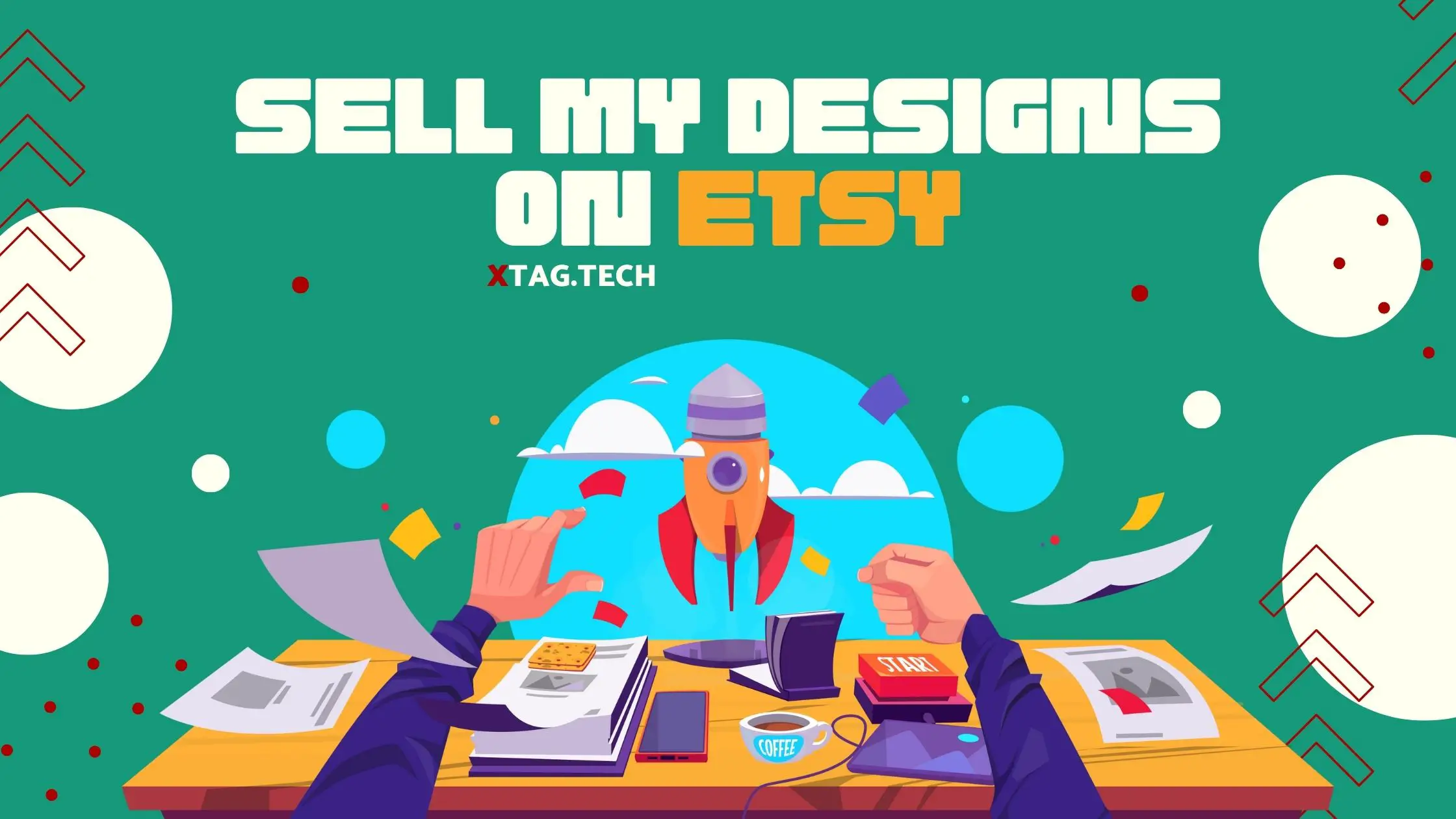Etsy has emerged as a vibrant marketplace for creators and designers seeking to share their unique creations with the world. With its extensive reach and an audience always on the lookout for something distinctive, Etsy provides an excellent platform for budding entrepreneurs in the creative realm. In this article, we’ll guide you through the process of setting up your Etsy shop, listing your designs, leveraging SEO strategies, providing exceptional customer service, and much more to help you successfully sell your designs on Etsy.
Etsy is not just a marketplace, it’s a Handmade craft community. It’s a platform where creators, artists, and designers come together to showcase their artistry and craftsmanship to a global audience. The allure of Etsy lies in its ability to connect creators with consumers seeking something beyond the mass-produced. If you’re wondering how to get started and effectively sell your designs on Etsy, you’re in the right place.
Understanding Etsy and Its Audience

Etsy is more than an online marketplace. It’s a hub for handmade, vintage, and unique items. The community on Etsy values craftsmanship, creativity, and authenticity. It’s a gathering place for those seeking something extraordinary, something crafted with love and passion.
Etsy’s audience is diverse, ranging from art enthusiasts and collectors to individuals looking for personalized gifts. Understanding this diverse audience is key to tailoring your designs and marketing strategies to meet their specific needs and preferences.
Setting Up Your Etsy Shop
Creating your Etsy shop is the first step toward showcasing your designs to the world. It’s essential to personalize your shop and make it appealing to potential buyers. Let’s delve into the process of setting up your Etsy shop and customizing it to reflect your brand and creativity.
Research and Planning
Before diving into the world of Etsy, it’s crucial to conduct thorough research and plan your approach. Start by exploring the platform to gain an understanding of what types of designs are popular and what sets successful shops apart. Look for gaps in the market that align with your unique style or niche.
Consider your target audience and their preferences. Are you designing for a specific demographic or catering to a particular interest? Understanding your ideal customer will help you tailor your designs and marketing efforts accordingly.
Create a Unique Brand

One of the keys to standing out on Etsy is to establish a strong and memorable brand. Your brand encompasses everything from your shop name and logo to your product photography and packaging. Create a brand identity that aligns with your design aesthetic and resonates with your target audience. Choose a shop name that is catchy, easy to remember, and reflects your personality or design style. Design a logo that represents your brand and use it consistently across all your marketing materials. And don’t forget about the packaging – a thoughtfully designed package can leave a lasting impression on your customers.
Set Up Your Etsy Shop
Once you have your research and branding sorted, it’s time to set up your Etsy shop. Creating a shop on Etsy is a straightforward process that involves a few key steps:
- Step 1: Sign up for an Etsy account if you don’t already have one. Step 2: Click on the “Sell on Etsy” button located at the top right corner of the Etsy homepage.
- Step 3: Choose a shop name that aligns with your brand and is not already taken. If possible, make it descriptive so that potential customers can get a sense of what you offer.
- Step 4: Customize your shop by adding a shop banner, shop icon, and shop policies. Make sure to include important information such as shipping and return policies to set clear expectations for your customers.
- Step 5: Payment and billing information. Etsy offers various payment options, including direct deposit, PayPal, and more. Choose the option that works best for you.
Create Compelling Listings

Now that your shop is set up, it’s time to create listings for your designs. Your listings play a crucial role in attracting customers and converting them into buyers. Follow these tips to create compelling and informative listings:
Title: Your title should be concise yet descriptive, including relevant keywords that potential buyers might search for. Be specific and highlight the unique aspects of your design.
Product Description: Write a detailed and engaging description of your design. Describe its features, materials used, dimensions, and any special techniques or processes involved in creating it. Use storytelling techniques to captivate your audience and make them feel connected to your design.
- Tags: Tags are keywords that help Etsy’s search algorithm understand what your listing is about. Use a combination of broad and specific tags to increase your chances of being discovered by potential buyers.
- Pricing: Set a competitive yet profitable price for your designs. Consider factors such as the cost of materials, production time, and market demand.
Photography: Invest time and effort in capturing high-quality product photos. Use natural lighting, clean backgrounds, and multiple angles to showcase your design effectively. Consider hiring a professional photographer if you don’t have the necessary skills or equipment.
Variations: If your design comes in different sizes, colors, or options, create variations within your listing to accommodate customer preferences. This makes it easier for buyers to find and purchase the exact design they desire.
Optimize for Search

Etsy’s search algorithm plays a significant role in determining the visibility of your listings. To improve your chances of appearing in relevant search results, optimize your listings for search engine optimization (SEO). Here are some SEO tips for Etsy listings:
Keywords: Conduct keyword research using tools like Etsy’s search bar, Google Trends, or third-party keyword research tools. Identify popular and relevant keywords related to your designs and incorporate them naturally into your titles, tags, and descriptions.
There are a few things you can do to make sure your Etsy shop is looking its best and performing at its highest potential. Etsy’s algorithm tends to favor recently updated listings, so make it a habit to refresh your active listings every few days. This means changing your photos, titles, and descriptions to keep them fresh and appealing to buyers.
You can also experiment with different keywords and pricing to see what works best for your shop. Another important thing to keep in mind is your shop’s overall appearance. Make sure your shop banner and profile are up to date, and that your shop is properly categorized. You can also add shop sections to highlight specific products or types of products you sell.
Finally, be sure to respond to customer inquiries and orders as quickly as possible. Etsy buyers are looking for a quick and easy shopping experience, so make sure you’re providing it. By following these simple tips, you can help your shop thrive and grow on Etsy. Opening an Etsy shop is a great way to sell your handmade products to a wider audience. But before you can start selling, there are a few things you need to do to set up your shop. Here are a few tips to help get you started.
- First, you’ll need to create a shop name. This is the name that will appear on your shop’s banner and in your Etsy profile. Be sure to choose a name that represents your shop and is easy to remember.
- Next, you’ll need to create a shop banner. This is the image that will appear at the top of your shop’s page. The banner should be 500 pixels wide by 150 pixels tall, and should represent your shop and its products.
You’ll also need to create a profile for your shop. This is where you’ll list your shop’s name, location, and other information about your shop.
Drive Traffic to Your Shop

While Etsy provides a platform for you to sell your designs, it’s essential to drive traffic to your shop independently. Here are some effective strategies to increase your shop’s visibility and attract potential customers:
Social Media Marketing: Leverage the power of social media platforms like Instagram, Facebook, and Pinterest to showcase your designs, engage with your audience, and drive traffic to your Etsy shop. Create visually appealing content, collaborate with influencers, and utilize relevant hashtags to expand your reach.
Content Marketing: Start a blog or create informative content related to your designs. Share your design process, offer tips and tutorials, or write about industry trends. This establishes you as an expert in your field and attracts potential customers who are interested in your niche.
Collaborations and Partnerships: Collaborate with other Etsy sellers or complementary businesses to expand your reach. Participate in local craft fairs, join online communities, and attend industry events to connect with like-minded individuals and explore partnership opportunities.
Paid Advertising: Consider investing in paid advertising to boost your Etsy shop’s visibility. Etsy offers various advertising options, including Promoted Listings and Google Shopping ads. Set a budget, target your ideal audience, and track the performance of your ads to optimize your marketing efforts.
Provide Excellent Customer Service
Customer satisfaction is crucial for the success of your Etsy shop. By providing excellent customer service, you not only encourage repeat purchases but also generate positive reviews and word-of-mouth referrals. Here are some tips for exceptional customer service:
When interacting with customers, timely communication is key. By responding to customer inquiries and messages promptly, you are indicating that you value their business and that you are taking their needs seriously. By keeping your response time within 24 hours, you are setting the expectation that you will be responsive and helpful. This will help to ensure customer satisfaction and may even lead to repeat business.
Shipping and Packaging: Ship your designs in a timely manner and ensure they are well-packaged to protect them during transit. Consider adding a personalized note or a small freebie as a token of appreciation.
When a buyer purchases an item from your Etsy shop, they are entering in to a contract with you, the seller. This contract outlines the expectations for the transaction, including the return and refund policies. As a seller, it is important to be fair and flexible when resolving any issues or concerns raised by buyers.
If a buyer is not satisfied with an item that they have received, they may ask to return it or to receive a refund. In order to be eligible for a return or refund.
If the buyer meets all of the above criteria, you, the seller, must agree to the return or refund. It is important to note that you are not obligated to agree to a return or refund if the buyer does not meet all of the above criteria, but you may choose to do so at your discretion.
Follow-Up: After a purchase, follow up with your customers to ensure their satisfaction. Send a thank-you email or request feedback to gauge their experience and address any potential concerns.
Continuously Improve and Innovate
As with any business, it’s important to continuously improve and innovate your designs and business strategies. Keep an eye on market trends, customer feedback, and industry developments to stay ahead of the competition. Experiment with new product lines, test different marketing strategies, and always strive for excellence in your designs and customer service.
Conclusion
In conclusion, selling your designs on Etsy can be a rewarding and profitable endeavor if approached strategically. By conducting thorough research, creating a unique brand, optimizing your listings, driving traffic to your shop, and providing excellent customer service, you can set yourself up for success. Remember, building a successful Etsy shop takes time and effort, so be patient, persistent, and always strive for growth and improvement. Good luck on your Etsy journey!
